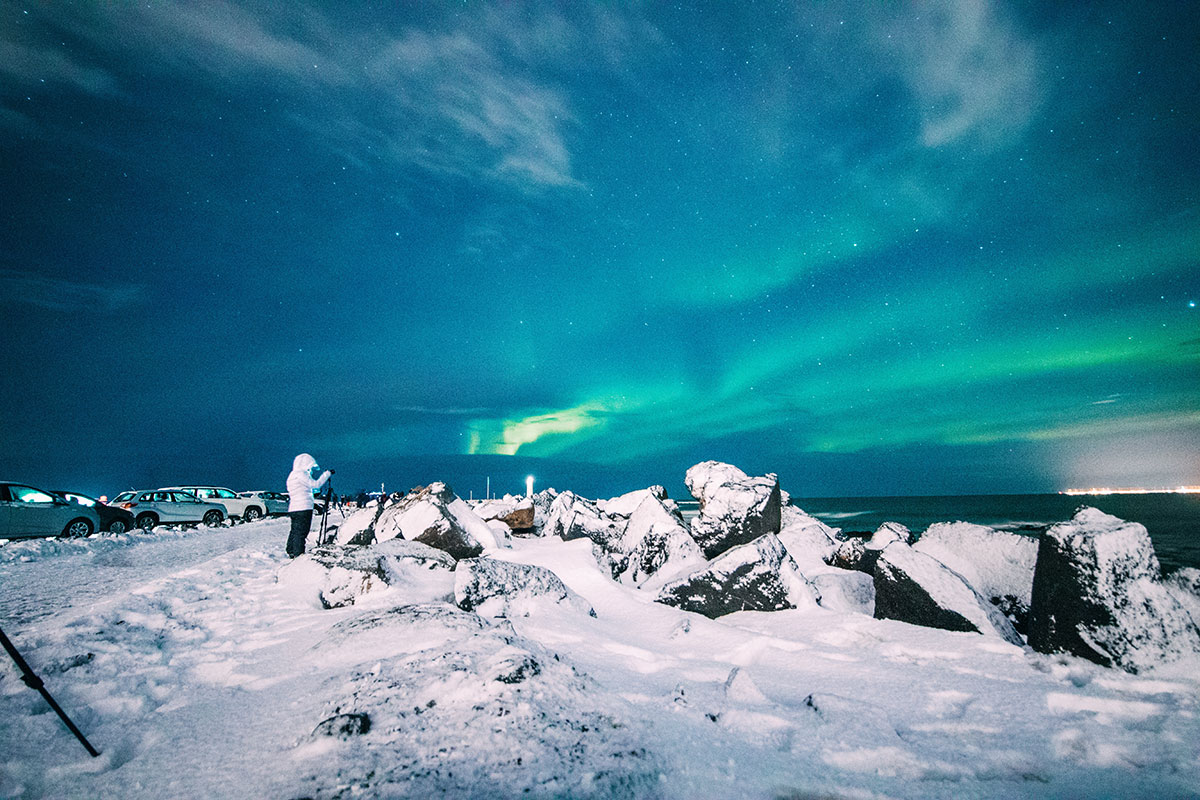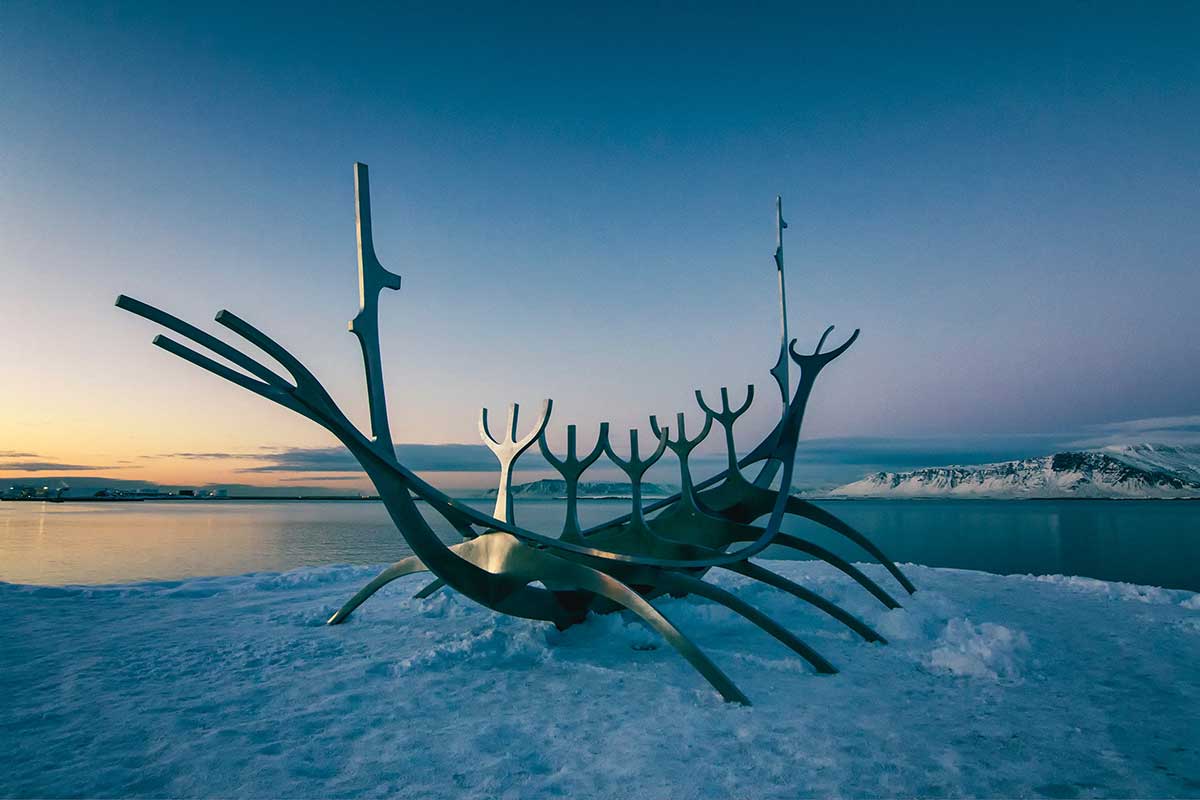Winter trip to Iceland: the top 10 things to bring
Published on December 17, 2024
A trip to Iceland in winter is a truly spectacular scene of contrasts, colors, and light, even though most tourists prefer to go there in summer. Less visited during this season, this land full of beauty and charm, covered in ice, is open to you. Organize beautiful hikes on foot, by snowmobile, or why not with snowshoes, and observe the splendor of volcanic and geothermal phenomena. Under the snow, the chiaroscuro is even more enchanting. Discover Iceland in winter is a completely feasible option as long as you are well equipped.
What to know about the Icelandic climate in winter?
Despite its proximity to the Arctic Circle and contrary to popular belief, in Iceland, the coastal regions generally do not experience the extreme cold of continental boreal zones. In fact, the country's climate, which is rather oceanic, largely escapes the influence of polar currents. Thus, during the winter period in Iceland, temperatures are often less low along the coasts. Along the entire south coast, it is not surprising to see rain in the middle of winter. On the other hand, the climate can be continental and the cold can be much more extreme at the top of the volcanic plateaus.
When traveling to Iceland in winter, you must take into account the length of the day, average temperatures, and precipitation. The Icelandic climate is characterized by sudden weather changes.

The Icelandic winter lasts on average six months, from October to April, with temperatures between -5 °C and >8 °C all along the coasts, often with rain in the form of snow and strong winds. In fact, the Icelandic language uses eight different names to refer to the wind, which shows how important this weather phenomenon is in the country's culture! Winter, in this area close to the North Pole, is marked by very short days (from mid-November to the end of January).
When to go to Iceland in winter?
The months of October, February, and March are the best times to enjoy all the wonders of the winter season. In March, you might be able to put on skis or snowshoes and enjoy longer days. During the holiday season, the days are very short, but you can stroll through the large Christmas market in Hafnarfjörður, near Reykjavik. Choirs, decorations, and Christmas costumes will be there, not to mention the New Year's fireworks, which are spectacular in Reykjavik.
What to see during a winter stay?
In winter, the entire Reykjavík region as well as the southwest quarter of the island are perfect for day trips. A long discovery weekend by self-drive is also possible. During a trip to Iceland in winter, must-sees are available to travelers such as the Reykjanes Peninsula and the geothermal delights of the Blue Lagoon, the Golden Circle region, and the spectacle of tectonic faults at Þingvellir. On the south coast, it is possible to plan a route to the village of Vík at the southern tip of the island. It is a spectacular region made up of magnificent cliffs, wide black volcanic sand beaches battered by offshore winds, and extraordinary waterfalls.
If you want to rent a car, opt for a 4×4 and remember to check the road conditions and weather here.
Some sites or natural phenomena are only accessible in winter. This is the case, of course, for the northern lights and the ice caves located under the glaciers (check the weather report for the northern lights in Iceland). Other unique activities are offered to visitors, such as braving snowstorms in a huge super-jeep!

What to pack for a trip to Iceland in winter?
The Icelandic climate is not as harsh as one might think. However, in less than half an hour, it is quite possible to go from bright sunshine to a snowstorm. So it is not the low temperatures that will bother you the most, but probably the wind and snowstorms… Here is a list of essentials to pack in your suitcase.
- Thin but warm clothes. Don't forget to pack thermal underwear or, even better, woolen underwear, which you can easily find locally. Wool, unlike cotton, dries very quickly and retains heat. Layering clothing is the secret to staying warm and dry.
- A waterproof parka.
- Waterproof shoes. You will spend a lot of time walking in mud and snow in winter, so a pair of waterproof boots is essential. Also, for city walks, sidewalks can become very icy and slippery, so make sure you don't risk painful falls by wearing inappropriate shoes.
- You should plan for one or two ski or hiking pants for outdoor activities (climbing, visiting ice caves, trekking, snowmobiling, etc.).
- As surprising as it may seem, it is essential to have a swimsuit. Iceland has many swimming pools and natural hot springs listed here. Also, a half-day at the Blue Lagoon is a must during a trip to Iceland.
- A portable charger can be very useful if you are in the wilderness and your phone battery or, worse, your camera battery dies!
- A tripod can be cumbersome for some, but it is the essential accessory for going northern lights hunting or photographing waterfalls. For photography enthusiasts, don't forget a good zoom to capture the wild animals you may encounter: arctic foxes, Icelandic horses, seals, reindeer…
- A water bottle! Icelandic spring water is among the purest in the world, so don't spend money on plastic bottles and, at the same time, do something for the planet. Just let the cold water run a bit before filling the bottle, to eliminate the hot water residue, which tastes of sulfur.
- In Iceland, it can start raining without warning! So it's very important to have a good waterproof bag to protect your electronic devices and spare clothes.
- Finally, a thermos, to always have a hot drink on hand.
So, ready to take a trip to Iceland in winter? There is a bit of an adventurer's side to this destination at this season and it always makes a strong impression on friends! But what they don't know is that... it's very easy!
A website by
Customize your trips with Quotatrip and receive tailor-made offers directly in your inbox.
Discover a country